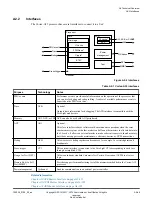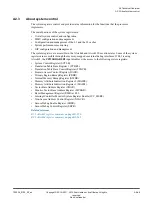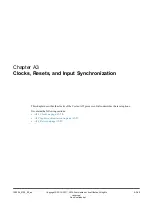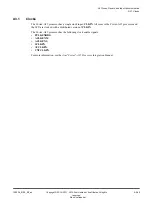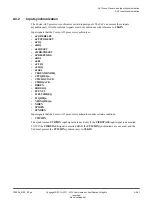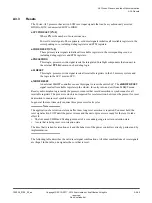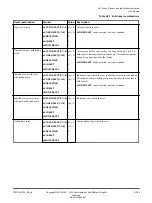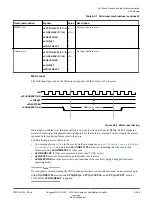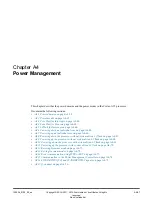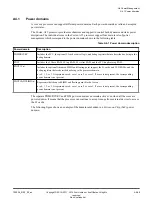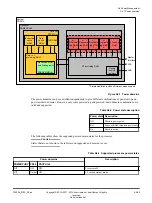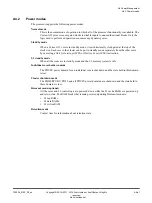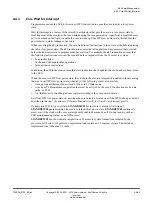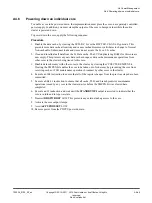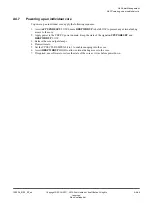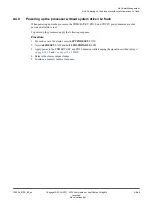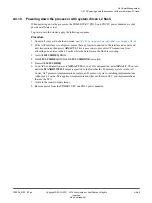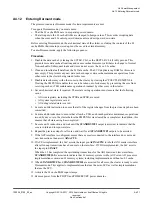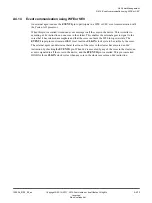
A4.1
Power domains
A core or a processor can support different power domains. Each power domain has valid and accepted
power states.
The Cortex
‑
A35 processor provides mechanisms and support to control both dynamic and static power
dissipation. The individual cores in the Cortex
‑
A35 processor support four main levels of power
management which correspond to the power domains shown in the following table:
Table A4-1 Power domain description
Power domain
Description
PDMERCURY
Includes the SCU, the optional L2 cache control logic, and debug registers that are described as being in the
debug domain.
PDL2
Includes the L2 data RAM, L2 tag RAM, L2 victim RAM, and the SCU duplicate tag RAM.
PDCPU<n>
Includes the optional Advanced SIMD and floating-point support, the L1 cache and TLB RAMs, and the
debug registers that are described as being in the processor domain.
n is 0, 1, 2, or 3. It represents core 0, core 1, core 2, or core 3. If a core is not present, the corresponding
power domain is not present.
PDCPUADVSIMD<n> Represents the Advanced SIMD and floating-point block of core n.
n is 0, 1, 2, or 3. It represents core 0, core 1, core 2, or core 3. If a core is not present, the corresponding
power domain is not present.
The separate PDMERCURY and PDL2 power domains can remain active even when all the cores are
powered down. It means that the processor can continue to accept snoops from external devices to access
the L2 cache.
The following figure shows an example of the domains embedded in a
System-on-Chip
(SoC) power
domain.
A4 Power Management
A4.1 Power domains
100236_0100_00_en
Copyright © 2015–2017, 2019 Arm Limited or its affiliates. All rights
reserved.
A4-58
Non-Confidential
Summary of Contents for Cortex-A35
Page 4: ......
Page 18: ......
Page 26: ......
Page 27: ...Part A Functional Description ...
Page 28: ......
Page 145: ...Part B Register Descriptions ...
Page 146: ......
Page 573: ...Part C Debug ...
Page 574: ......
Page 845: ...Part D Appendices ...
Page 846: ......

